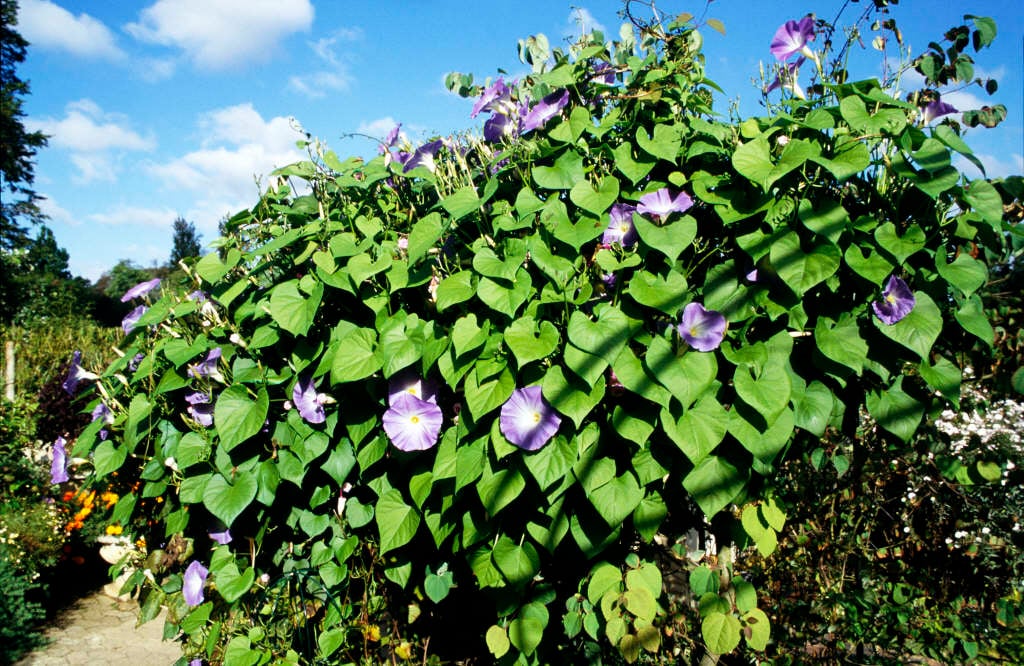Size
Ultimate height
2.5–4 metresTime to ultimate height
1 yearUltimate spread
0.5–1 metresGrowing conditions
Moisture
Moist but well–drainedpH
Acid, Alkaline, NeutralColour & scent
| Stem | Flower | Foliage | Fruit | |
| Spring | Green | |||
|---|---|---|---|---|
| Summer | Blue White | Green | ||
| Autumn | ||||
| Winter |
Position
- Full sun
Aspect
West–facing or South–facing
Exposure
Sheltered Hardiness
H1CBotanical details
- Family
- Convolvulaceae
- Native to GB / Ireland
- No
- Foliage
- Deciduous
- Habit
- Climbing
- Potentially harmful
- Harmful if eaten. Wear gloves and other protective equipment when handling. Pets: Harmful if eaten. For further information and contact numbers regarding pets, see the HTA guide to potentially harmful plants
- Genus
Ipomoea can be annuals or perennials, often twining, or evergreen shrubs, with simple, lobed or dissected leaves and tubular or funnel-shaped flowers which may be solitary or borne in racemes or panicles
- Name status
Accepted
How to grow
Cultivation
Best grown as an annual climber, full sun and shelter from cold winds is essential in any moist but well-drained soil
Propagation
Propagate by seed. See sowing seeds indoors for further advice
Suggested planting locations and garden types
- City and courtyard gardens
- Cottage and informal garden
- Flower borders and beds
- Wall side borders
Pruning
No pruning required
Pests
May be susceptible to glasshoouse red spider mite and glasshouse whitefly
Diseases
Generally disease-free
Love gardening
Sign up to receive regular gardening tips, inspiration, offers and more
View our Privacy Policy
Get involved
The Royal Horticultural Society is the UK’s leading gardening charity. We aim to enrich everyone’s life through plants, and make the UK a greener and more beautiful place.
